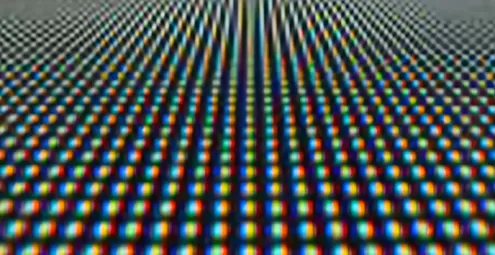MicroLED vs. MiniLED: Key Differences
MicroLED and MiniLED are two distinct display technologies. Despite their similar names, they differ significantly in multiple aspects. Below is a detailed comparison:
1. Size and Structure
- MicroLED:
- Chip Size: Typically smaller than 100 micrometers (µm), even reaching micron-level dimensions.
- Structure: Each MicroLED acts as an independent self-emissive pixel, requiring no backlight layer (similar to OLED but using inorganic materials).
- MiniLED:
- Chip Size: Ranges from 100 to 300 micrometers—smaller than traditional LEDs but larger than MicroLEDs.
- Structure: Primarily used in LCD backlight modules. Achieves finer local dimming (e.g., thousands of zones) through densely packed LED chips, improving contrast.
---
2. Technical Principles
- MicroLED:
- Self-Emissive: Each pixel emits light independently, enabling precise control over brightness and color for ultra-high contrast and accuracy.
- No Backlight: Eliminates the need for liquid crystal layers or backlight modules, resulting in a thinner structure.
- MiniLED:
- Enhanced Backlight**: Serves as an advanced LCD backlight. Improves brightness control with more dimming zones (e.g., 1000+), but remains fundamentally an LCD technology.
---
3. Display Performance
- MicroLED:
- Contrast: Theoretically infinite (due to per-pixel control).
- Response Time: Extremely fast, comparable to OLED.
- Brightness & Power Efficiency: Higher brightness with lower energy consumption (only active pixels consume power).
- Lifespan: Long-lasting inorganic materials, no risk of screen burn-in.
- MiniLED:
- Contrast: Significantly better than traditional LCDs but inferior to self-emissive technologies due to reliance on backlight dimming.
- Brightness: Capable of higher peak brightness (e.g., over 2,000 nits).
- Power Efficiency: Higher energy consumption than MicroLED, as the backlight must remain active.
4. Applications
- MicroLED:
- High-End Large Screens: Commercial displays (e.g., Samsung’s The Wall), AR/VR devices.
- Future Potential: Wearable devices, transparent displays—though mass production remains challenging.
- MiniLED:
- Consumer Electronics: Commercialized in premium TVs (e.g., Apple’s Pro Display XDR, iPad Pro), monitors, and laptops.
- Transitional Solution: Offers a cost-effective, high-quality alternative between OLED and MicroLED.
5. Manufacturing Challenges
- MicroLED:
- Mass Transfer Technology: Difficulty in accurately transferring millions of micron-scale LEDs to substrates, leading to low yield and high costs.
- Defect Repair Difficulty: Repairing microscopic pixel defects is highly complex, impacting production efficiency.
- MiniLED:
- Mature Processes: Built on improved traditional LED technology, with lower manufacturing complexity.
- Cost Control: Higher cost than conventional LEDs but far cheaper than MicroLEDs, already achieving mass production.
6. Cost and Market Status
- MicroLED:
- Cost: Extremely high; currently limited to commercial and conceptual products.
- Market Stage: Early-phase technology, not yet fully mature.
- MiniLED:
- Cost: Relatively high but increasingly accessible in consumer-grade markets.
- Market Stage: Rapidly expanding, becoming a mainstream choice for premium displays.
Summary
- MiniLED: An upgraded LCD technology that enhances image quality via dense backlighting, ideal for high-end consumer markets seeking value.
- MicroLED: A revolutionary self-emissive technology with superior performance but unresolved mass-production hurdles. It has the potential to redefine the display industry.
Core Difference: MiniLED is a backlight optimization technology, while MicroLED is a next-generation display technology that rivals OLED and may surpass its performance limitations.










